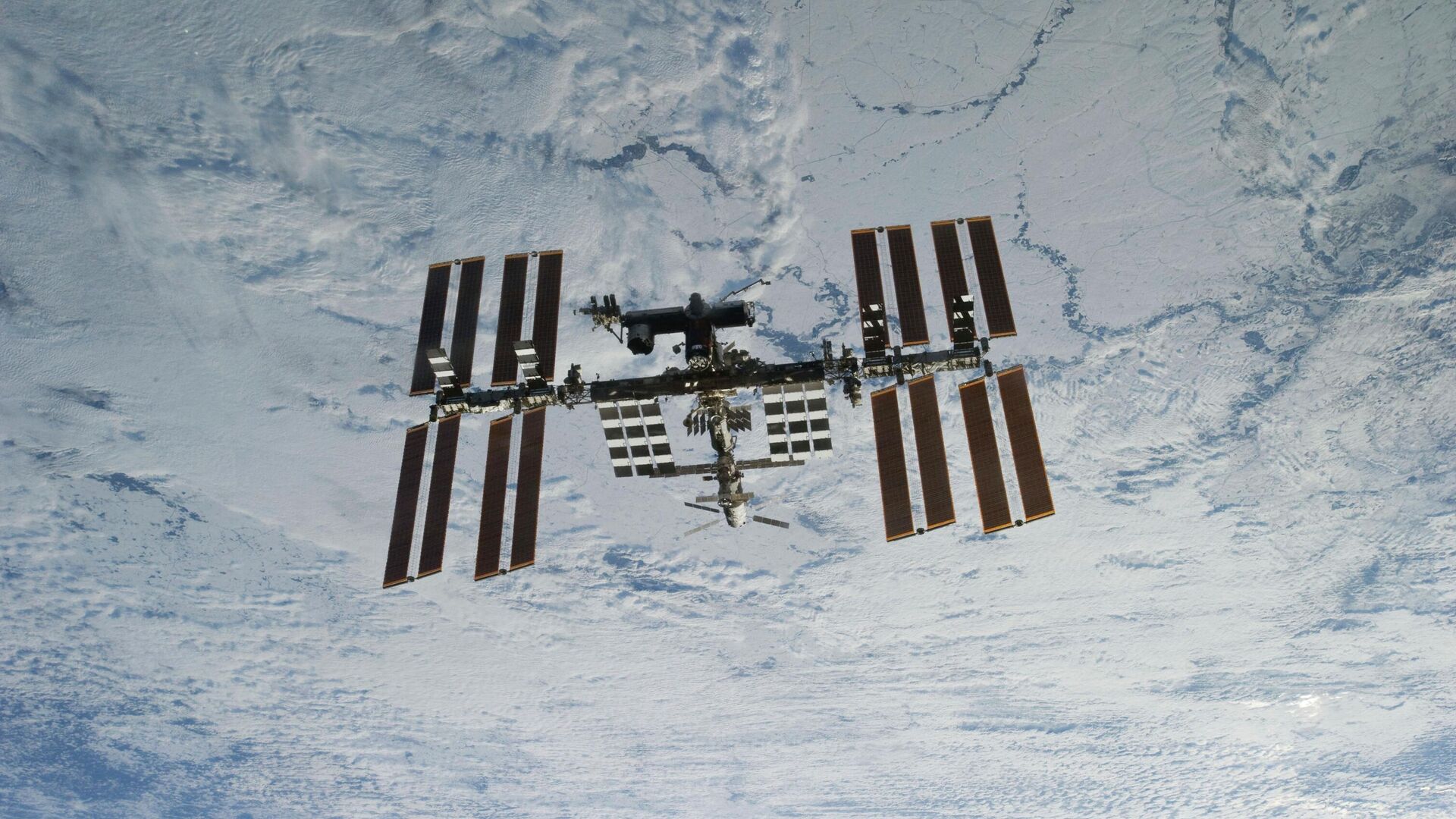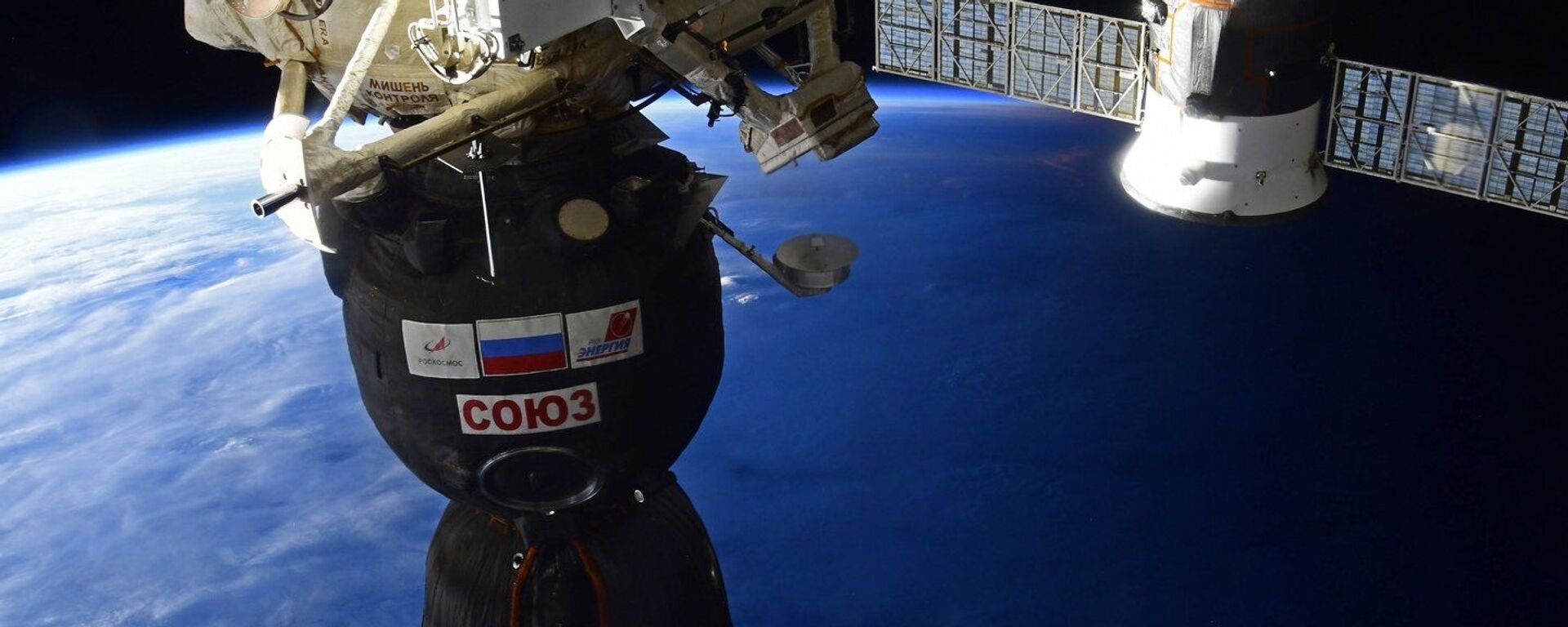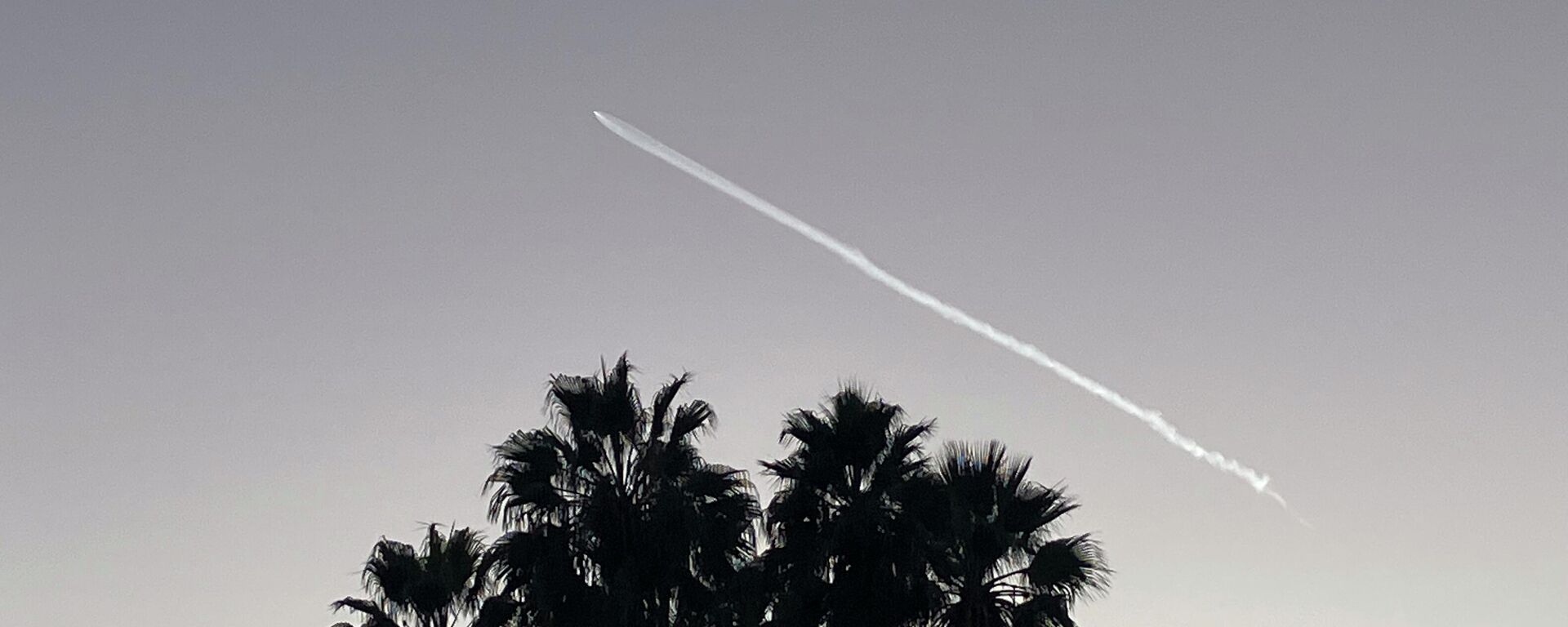‘We Are One Crew’: Russian, US Cosmonauts in NASA Crew-6 Have No Disagreements
07:14 GMT 30.01.2023 (Updated: 09:59 GMT 30.01.2023)

© AP Photo
Subscribe
HOUSTON (Sputnik), Lenka White - NASA's Crew-6 is one team, in which the Russian and American cosmonauts have no disagreements, Roscosmos cosmonaut and a mission specialist of Crew-6 Andrey Fedyaev told Sputnik.
"When we work - we are one crew, so there can be no disagreements and, you know, I really like the fact that we all feel it, we all know and understand it. We in the crew have absolutely no disagreements in principle on any occasion," Fedyaev said.
Russian space agency Roscosmos maintains contact with SpaceX through NASA and supports any international cooperation that can help countries achieve common goals, Russian cosmonaut Andrey Fedyaev said.
"As far as I know, we don’t have such direct interaction with SpaceX. We interact with SpaceX through NASA, but in any case, I think relations of any kind between different countries should always be strengthened in order to come together to some common goal that they set for themselves," Fedyaev said, when asked whether he would like to see deeper cooperation between Roscosmos and SpaceX.
Adapting to weightlessness in space is different for each individual, Andrey Fedyaev said.
"Since I am flying for the first time, I just ask for the advice of any other guys who were already in space, other cosmonauts,” Fedyaev said in NASA Johnson Space Center in Houston. "But in general, this period lasts for each person in different ways."
There is no answer because all bodies are different - some are tall, some shorter, thinner or with more muscular figures, he added. Some people are getting used to weightlessness for three days, while for some it may last for a week.
Fedyaev also said that they do get special training to test their bodies and get used to the zero gravity feeling. Some of the ways for practice are flights with weightlessness, rotation on a special chair but also other physical exercises.
Fedyaev also said that they do get special training to test their bodies and get used to the zero gravity feeling. Some of the ways for practice are flights with weightlessness, rotation on a special chair but also other physical exercises.
Elon Musk’s idea of living on Mars is wild but many uncommon ideas became normal parts of life, and this happening would be groundbreaking for humankind, Fedyaev said.
“The idea of colonizing Mars, this idea seems kind of crazy. But in general, the history of mankind knows many examples of what initially seemed like a crazy idea, and then it became a completely common activity,” Fedyaev said.
Icarus, from Greek mythology, he added, also wanted to fly and fell down from the sky when he burned his beeswax wings for being too close to the sun. Yet, here we are today, calmly flying around the globe, he said.
“The idea of colonizing Mars, this idea seems kind of crazy. But in general, the history of mankind knows many examples of what initially seemed like a crazy idea, and then it became a completely common activity,” Fedyaev said.
Icarus, from Greek mythology, he added, also wanted to fly and fell down from the sky when he burned his beeswax wings for being too close to the sun. Yet, here we are today, calmly flying around the globe, he said.
"So it is quite possible that this venture will be crowned with success and I will only be sincerely happy about this, because humanity will take a huge step forward in this case,” Fedyaev said.
As a former pilot - when you get into the pilot’s seat, you have to forget all your problems and leave them on Earth, he added.
Fedyaev joined the Russian Air Force following his graduation in 2004 and obtained the rank of major prior to his retirement in 2013.
Fedyaev will be part of the four-man team that will be aboard the SpaceX Dragon spacecraft for the Crew-6 mission which is scheduled to launch February 26 from NASA's Kennedy Space Center in Florida.
NASA and Roscosmos celebrate a long partnership of over two-decades. The relations got tested last year after the Ukraine crisis started. The former Roscosmos head Dmitry Rogozin criticized the United States for imposing Ukraine-related sanctions on Russia and signaled it could potentially block cooperation between the United States and Russia on the International Space Station (ISS).
In July 2022, Russian President Vladimir Putin released Rogozin from the post of Roscosmos CEO, his successor is the former deputy prime minister in charge of the defense industry, Yuri Borisov.
The Roscosmos Human Space Flight Program's Executive Director Sergei Krikalev said last year in October, that the Russian state space corporation Roscosmos seeks to reduce tensions with NASA.
Roscosmos and NASA signed an agreement on integrated flights of astronauts to the ISS last year in July. This week during a press conference, NASA said they would like to continue cross-flight spaceflights with Russia's Roscosmos space agency in the future because they serve as an advantage to both space programs and for human spaceflights.
The multinational background of SpaceX Crew-6 is precious and makes it a better crew to go to space, NASA astronaut and mission specialist Warren Hoburg told Sputnik.
"I think one of the strengths is that we spend time training, both here in the US and also in Russia and also with our other international partners. So that's the European Space Agency and JAXA. We have a UAE astronaut on my crew," Hoburg said. "So this diverse set of perspectives from around the world, I think, is quite valuable in making us the best possible crew on orbit."
Cooperation between NASA and Roscosmos is incredible, with the two centers communicating every day on operations, astronaut Warren Hoburg told Sputnik.
“The cooperation, honestly, is amazing to see even in the hardest of times, which we are going through some hard times right now. Seeing the day to day operations play out is amazing and I've seen that here on the ground in Mission Control," Hoburg said. "So the Mission Control Center here in Houston works on a daily basis with mission control in Moscow."
Cosmonauts aboard a spacecraft get a great selection of meals, Hoburg said.
"Yeah, so we have a great variety of food. It's really wonderful and amazing. There's an amazing food lab here at Johnson Space Center that puts together many of our meals. The Russian food often comes in cans, so you open a metal can and there's your food. Our food on the American side is often in bags of one form or another," Hoburg said.
Some food and pouches, Hoburg added, just need to be heated, while others require something more.
"Other food needs to be rehydrated so we inject hot water into the food pouch, and then let it rehydrate for a few minutes and then it's ready to heat," he said.
They get everything from pastas to meatloaf to granola smoothies - there are hundreds of different menu items, he added.
Astronauts need carefully structured meals because weightlessness has a great impact on their bodies especially over longer periods. Muscle mass and bone density can be decreasing by about 20% and this could be an issue when they return back to Earth by having bone fractures.
The change in taste also may occur - when we are on Earth, our body fluids are usually closer to our feet but when in space, they move freely throughout the bodies which can block sinuses and make the meals tasteless.
The International Space Station reportedly has a dining room with tables and chairs where the cosmonauts can strap themselves in to normalize the dining experience.
"Other food needs to be rehydrated so we inject hot water into the food pouch, and then let it rehydrate for a few minutes and then it's ready to heat," he said.
They get everything from pastas to meatloaf to granola smoothies - there are hundreds of different menu items, he added.
Astronauts need carefully structured meals because weightlessness has a great impact on their bodies especially over longer periods. Muscle mass and bone density can be decreasing by about 20% and this could be an issue when they return back to Earth by having bone fractures.
The change in taste also may occur - when we are on Earth, our body fluids are usually closer to our feet but when in space, they move freely throughout the bodies which can block sinuses and make the meals tasteless.
The International Space Station reportedly has a dining room with tables and chairs where the cosmonauts can strap themselves in to normalize the dining experience.
After working for Boeing until 2014 and finishing his PhD in electrical engineering and computer science, Hoburg became an assistant professor at MIT. He was selected to be an astronaut candidate in 2017. He was picked to be a SpaceX Crew-6 pilot in 2023.
Hoburg will be part of the four-man team that will be aboard the SpaceX Dragon spacecraft Crew-6 which is scheduled to launch February 26 from NASA's Kennedy Space Center in Florida to the International Space Station. The duration of the mission will be 6 months.
Other members of the crew, apart from Hoburg, are: NASA astronaut and spacecraft commander Stephen Bowen, Roscosmos cosmonaut and mission specialist Andrey Fedyaev, and UAE astronaut and mission specialist Sultan Alneyadi.
Fedyaev will be the second Russian cosmonaut to board the US Crew Dragon spacecraft as part of the International Space Station integrated flights agreement.
In October, the spacecraft carrying the Crew-5 mission team, including Russian cosmonaut Anna Kikina, successfully docked on the ISS.
The ISS is the biggest-ever-made structure ever put into orbit. It was created in 1998 by Russia, the United States, Canada, Japan, and the members of the European Space Agency (ESA).
Since 2000, the ISS has been permanently occupied by American and Russian-led crews to carry out as many experiments as possible at duration for about 6 months.
Other members of the crew, apart from Hoburg, are: NASA astronaut and spacecraft commander Stephen Bowen, Roscosmos cosmonaut and mission specialist Andrey Fedyaev, and UAE astronaut and mission specialist Sultan Alneyadi.
Fedyaev will be the second Russian cosmonaut to board the US Crew Dragon spacecraft as part of the International Space Station integrated flights agreement.
In October, the spacecraft carrying the Crew-5 mission team, including Russian cosmonaut Anna Kikina, successfully docked on the ISS.
The ISS is the biggest-ever-made structure ever put into orbit. It was created in 1998 by Russia, the United States, Canada, Japan, and the members of the European Space Agency (ESA).
Since 2000, the ISS has been permanently occupied by American and Russian-led crews to carry out as many experiments as possible at duration for about 6 months.


